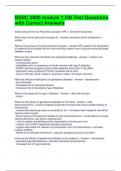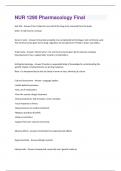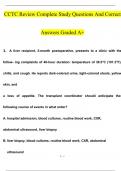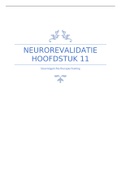Exam (elaborations)
BSNC 5000 module 1 OB Test Questions with Correct Answers
- Course
- Institution
BSNC 5000 module 1 OB Test Questions with Correct Answers What produces Human Placental Lactogen (HPL) - Answer-the placenta What does human plancetal lactogen do - Answer-increases insulin resistance in mother What is the process of human placental lactogen - Answer-HPL leads to the break...
[Show more]








